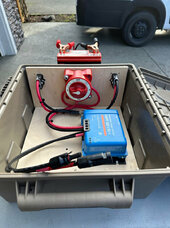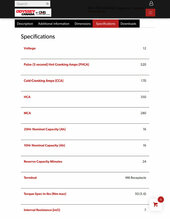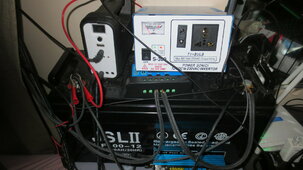corporal_Canada
New Member
bonjour/hello, my name is Christopher from the arrogant french part of Canada(please forgive me if my English isnt flawless), however i moved to the Philippines last year and all this sun smacking me on the top of my gorgeous head got me thinking, why am i not using it... i got 3x 300+ solar panels that produce roughly 100watts each at minimum...... im on my 3rd inverter... i hav a 12v SLA battery that claims to be 100ah.... (however it is very very chinese... sorry before i continue id like to ask 1 simple question ... i learned in basic Tesla Engineering class that electrons only flow 1 direction.....so if all the solar panels are going to the pos and neg terminal of a battery.. how can you expect to draw anything from that battery by clamping an inverter onto those exact terminals ???
anyways.. since the battery only serves to regulate the voltage and / or store a bit of power... am i right to assume that the battery size makes no difference ? as long as it is 12V.. i can just connect any inverter to it...(ie.. 12v car batt or 12v motorcycle batt) and the inverter will power my 200wh pc as long as there is yummy sunlight(and awesome monitor).. .. and possibly a very petite refridgerator ???as a percaution, i did order a UPS, to protect the pc from commiting seppuku.. i do have a charge controller.. one of those tiny blue chinese ones ... but last time i reconnected everything, the lcd screen on the charge controller refuses to come on.. leading me to believe that my 12v 100ah batt is over....
anyways.. since the battery only serves to regulate the voltage and / or store a bit of power... am i right to assume that the battery size makes no difference ? as long as it is 12V.. i can just connect any inverter to it...(ie.. 12v car batt or 12v motorcycle batt) and the inverter will power my 200wh pc as long as there is yummy sunlight(and awesome monitor).. .. and possibly a very petite refridgerator ???as a percaution, i did order a UPS, to protect the pc from commiting seppuku.. i do have a charge controller.. one of those tiny blue chinese ones ... but last time i reconnected everything, the lcd screen on the charge controller refuses to come on.. leading me to believe that my 12v 100ah batt is over....





